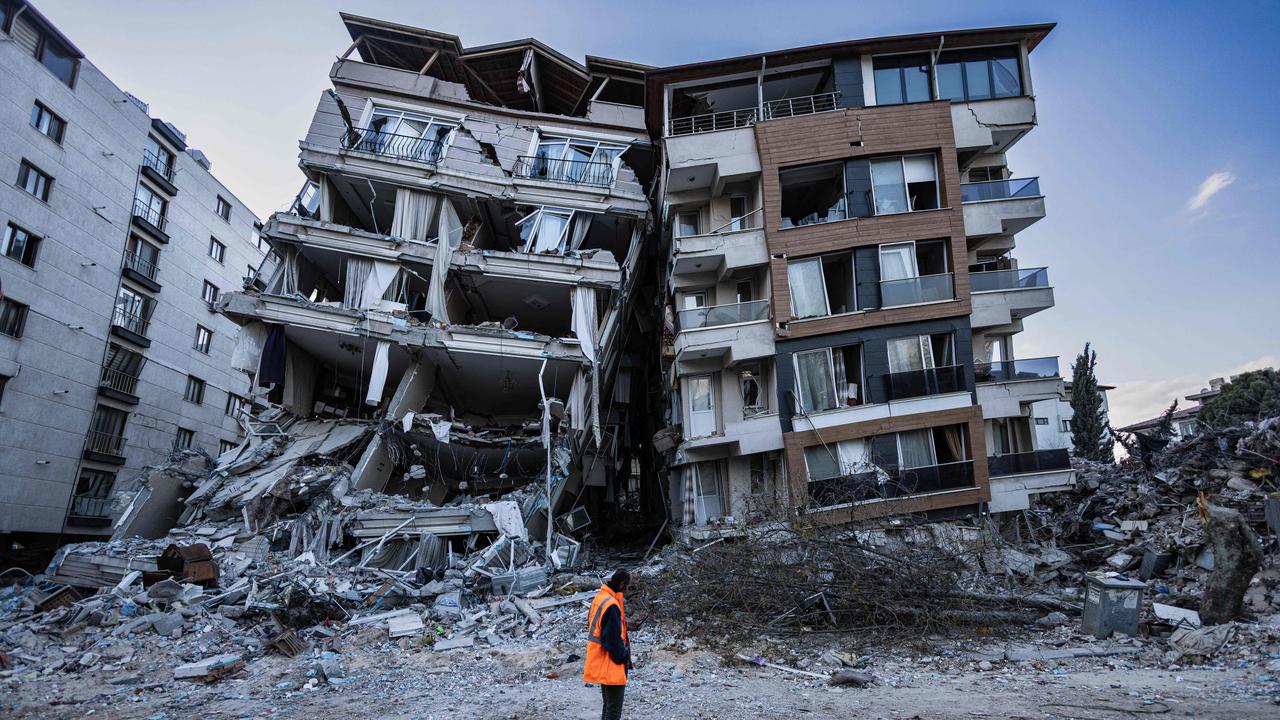Earthquakes On Earth: Our planet, Earth, is a dynamic and ever-changing entity. Unlike the solid, unchanging rock we might imagine, it’s a swirling sphere of molten rock, churning beneath a relatively thin, fragile crust. This constant movement, a complex interplay of heat, pressure, and tectonic plates, is the hidden engine that powers our planet’s many geological wonders. Earthquakes are a dramatic consequence of this internal dynamism. When stresses build within the Earth’s crust, exceeding the rock’s strength, a sudden release of energy occurs. This energy radiates outward as seismic waves, causing the violent shaking of the ground that we experience as an earthquake.

Earthquake Terminology: Demystifying the Jargon
Understanding some key terms associated with earthquakes can help you stay informed and prepared:
Magnitude: This measures the amount of seismic energy released, typically on the Richter scale (ranging from 0 to nearly 10).
Intensity: This describes the strength of shaking experienced at a specific location, measured using the Modified Mercalli Intensity (MMI) scale (ranging from I – Not felt to XII – Catastrophic).
Epicenter: The point on the Earth’s surface directly above the hypocenter, where the earthquake originates.
Hypocenter: The location within the Earth’s crust where the earthquake rupture starts.
Aftershock: Smaller earthquakes that follow a larger one, occurring in the same region.
Tsunami: A giant ocean wave often triggered by underwater earthquakes.
Recent Earthquake Devastations: A Sobering Reminder
Recent Earthquake Shakes New York City and Surrounding Areas
In a region unaccustomed to seismic activity, a recent earthquake centered near Whitehouse Station, New Jersey, rattled nerves and caused tremors across the densely populated New York City metropolitan area. The U.S. Geological Survey (USGS) reported the 4.8 magnitude quake on Friday morning, sending a wave of surprise through the Northeast.
While thankfully no immediate damage or injuries were reported, the event served as a stark reminder of the potential for earthquakes, even in areas considered low-risk. Residents across New York City, Philadelphia, and surrounding areas described feeling the ground rumble, with reports of shaking buildings and rattling objects in Brooklyn.
The USGS estimates that over 42 million people might have felt the tremors, highlighting the widespread impact of even a moderate earthquake in a densely populated region. The event even caused a brief pause in a Security Council meeting at the United Nations headquarters in New York City.
Earthquakes can cause widespread destruction, loss of life, and economic hardship. Here’s a glimpse into some recent destructive events:
March 2024, Taiwan: A powerful 7.4 magnitude earthquake struck eastern Taiwan, causing landslides and building collapses. The death toll tragically reached over 100, with hundreds injured.
February 2024, Papua New Guinea: A strong 6.9 magnitude earthquake jolted Papua New Guinea, triggering landslides and damaging critical infrastructure. While casualties were thankfully minimal, the event highlighted the region’s vulnerability.
December 2023, Indonesia: A devastating 6.4 magnitude earthquake struck Indonesia’s Java Island, resulting in over 300 fatalities and widespread damage to homes and buildings.
These are just a few recent examples, emphasizing the constant threat earthquakes pose.
The Most Fatal Earthquakes in History
Earthquakes have unfortunately claimed countless lives throughout history. Here are some of the most deadly on record:
1556 Shaanxi Earthquake, China: Estimated fatalities: 830,000
2004 Indian Ocean Earthquake and Tsunami: Estimated fatalities: 230,000
1976 Tangshan Earthquake, China: Estimated fatalities: 250,000
These figures serve as a stark reminder of the immense power and destructive potential of earthquakes.
Earthquake Safety: Before, During, and After
Being prepared for an earthquake can significantly improve your chances of survival and minimize damage. Here’s a breakdown of essential steps:
Before an Earthquake:
Develop a family disaster plan: This should include communication strategies, evacuation routes, and meeting points.
Conduct a home safety assessment: Identify and secure potential hazards like furniture, bookshelves, and heavy objects.
Prepare an emergency kit: Stock essential items like non-perishable food, water, first-aid supplies, a flashlight, and a radio.
During an Earthquake:
Drop, Cover, and Hold On: If indoors, find sturdy cover under a desk or table and hold on. Stay away from windows, mirrors, and bookcases.
Evacuate if outside: Move away from buildings, power lines, and trees. Seek open ground if possible.
Stay in your car if driving: Pull over to the side of the road away from traffic lights and bridges and stay inside your vehicle.
After an Earthquake:
Check for injuries: Tend to yourself and others who may be hurt.
Be aware of aftershocks: Expect smaller earthquakes to follow the main event.
Listen to emergency instructions: Stay informed about official updates and advisories.
Use caution around damaged buildings: Only enter a building if you are sure it’s safe.
Optimizing Your Earthquake Safety:
Regularly practice earthquake drills with your family. Familiarize yourself with local evacuation routes and emergency shelters. Consider earthquake-proofing your home by bolting down furniture and securing overhead light fixtures.
Step 1: DROP where you are, onto your hands and knees. This position protects you from being knocked down and reduces your chances of being hit by falling or flying objects.
Step 2: COVER your head and neck with one arm and hand.
If a sturdy table or desk is nearby, crawl underneath for shelter.
If no shelter is nearby, crawl next to an interior wall.
Stay on your knees; bend over to protect vital organs.
Step 3:HOLD ON until the shaking stops.
Under shelter: hold on to it with one hand; be ready to move with your shelter if it shifts
No shelter: hold on to your head and neck with both arms and hands.
Frequently Asked Questions (FAQs):
- Can earthquakes be predicted?
Unfortunately, current technology doesn’t allow for accurate earthquake prediction. However, scientists can identify areas with a higher risk of seismic activity.
- What are the signs of an impending earthquake?
There can be subtle signs like unusual animal behavior or changes in water levels in wells, but these are not always reliable indicators.
- What should I do if caught outdoors during an earthquake?
Move away from buildings, trees, power lines, and other falling hazards. Find open ground and drop to the ground.
- What should I do if I’m indoors during an earthquake?
If you’re indoors, the safest place to be is under a sturdy desk or table. Drop, cover, and hold on. Avoid windows, mirrors, and bookcases, as these can shatter and cause injuries. Stay away from heavy objects that could fall.
- What should I do after an earthquake?
Check for injuries and attend to yourself and others who may be hurt. Be aware of aftershocks, which are smaller earthquakes that can follow the main event. Listen to emergency instructions on the radio or from official sources. Use caution around damaged buildings and only enter if you are sure it’s safe.
- What should I include in my earthquake preparedness kit?
Your earthquake preparedness kit should include essential items like non-perishable food, water (at least one gallon per person per day for three days), a first-aid kit, a flashlight, a battery-powered radio, and a whistle for signaling for help. Consider including additional items like sanitation wipes, dust masks, a can opener, and a multi-tool.
- How can I earthquake-proof my home?
There are several steps you can take to earthquake-proof your home. Secure heavy furniture and appliances to walls or studs. Identify and strap down unsecured shelves and cabinets. Consider having gas and water shut-off valves that are easily accessible.
- What are some additional resources for earthquake preparedness?
The U.S. Geological Survey (USGS): https://www.usgs.gov/programs/earthquake-hazards/earthquakes
The Federal Emergency Management Agency (FEMA): https://www.ready.gov/
The American Red Cross: https://www.ready.gov/earthquakes
- Should I be worried about a large earthquake hitting the Northeast in the future?
While the recent earthquake serves as a reminder that no region is entirely immune to seismic activity, the Northeast is generally considered a lower-risk zone compared to other parts of the world. However, it’s still important to be prepared for any potential event.
- What are tsunamis and how do they relate to earthquakes?
Tsunamis are giant ocean waves often triggered by underwater earthquakes. If you’re in a coastal region and feel a strong earthquake, particularly if it’s centered offshore, evacuate to higher ground immediately as a tsunami may be imminent. It’s crucial to follow official warnings and evacuation instructions.





